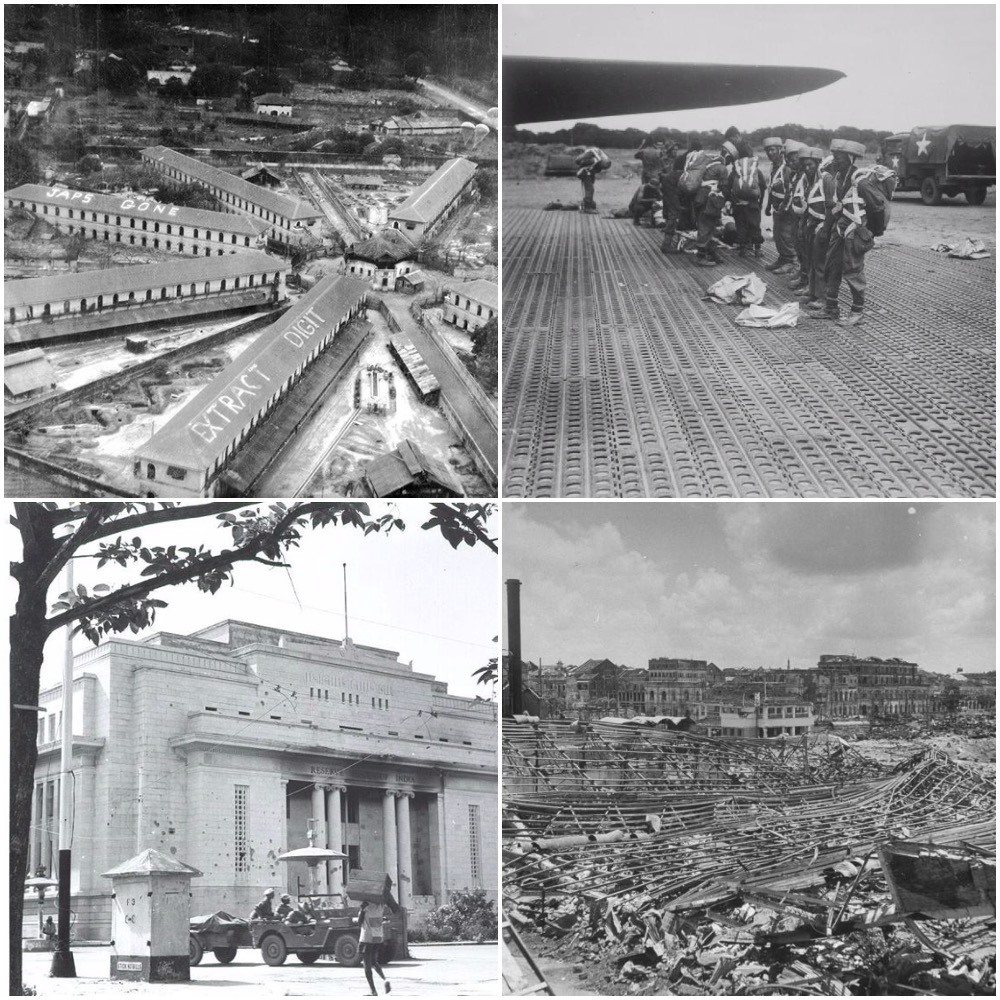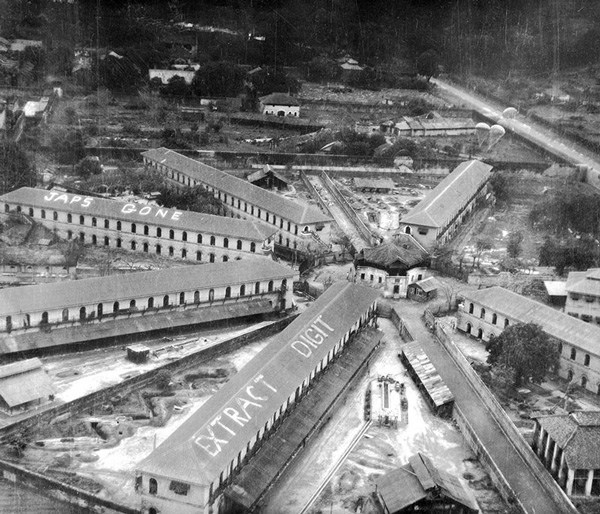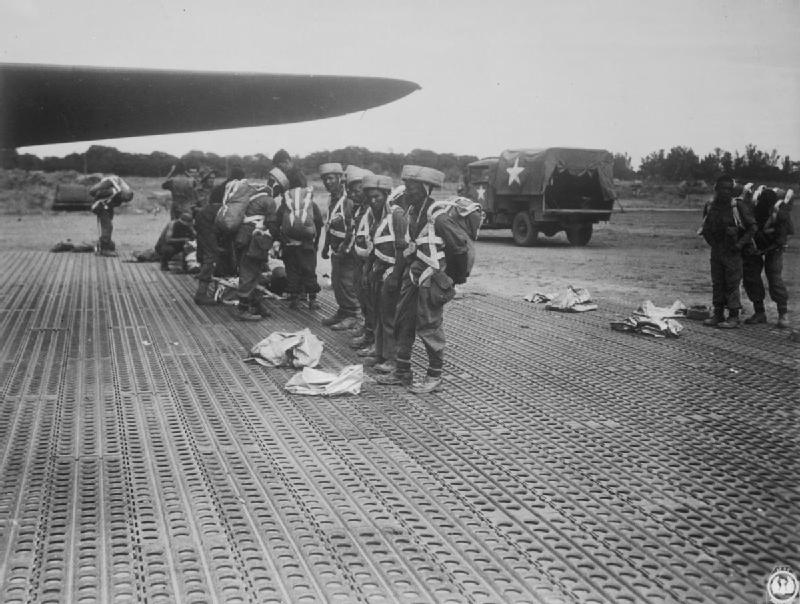

General William Slim, commander of the British 14th Army and other Allied commanders at Government House, Rangoon, 8 May 1945.

Insein Prison from the Allied reconnaissance plane.

Troops of the Gurkha Parachute Brigade at Elephant Point, 2 May 1945
2 May 1945
The Allied capture of Rangoon
room Myanmar
On 2 May 1945 United Nations forces recaptured Rangoon. Dubbed "Operation Dracula". Though the United Nations Charter would not be ratified for five more months, the "Declaration of the United Nations" had been agreed by 26 nations in January 1942, including the US, UK, and USSR. Allied forces were from then often referred to as "United Nations forces" for the rest of the war.
A million-man overland invasion from both India and China had already taken Myitkyina (August 1944), Meiktila (March 1945) and Mandalay (April 1945) from the Japanese after years of bloody fighting. Arakan region also fell to the Allies over early 1945.
By the end of April, around the same time Adolph Hitler committed suicide in Berlin, the Indian 17th Division of the British Fourteenth Army was pushing south from Pegu. The Allies then prepared to take Rangoon through an amphibious assault by the Indian 26th Division followed by the British 2nd Division, both sailing from Ramree Island. The attack was spearhead by a Gurkha parachute battalion landing at Elephant Point.
On 2 May, American, British, and Australian reconnaissance planes flying over Insein Prison noticed a message on the roofs stating: "Japs Gone" and "Extract Digit" (a not very polite expression meaning "hurry up"). The 26th Indian Division (a mixed force of mainly English, Punjabi, and Gurkha troops) entered the city virtually unopposed the next day.
Allied leaders had feared that the Japanese would make a tough stand in Rangoon the way they had done in Manila two months before (leading to 100,000 dead Filipinos). Indeed, the Burma Area Army commander General Heitarō Kimura had been ordered to defend Rangoon to the death, but he withdrew to Moulmein. Had it not been for his decision to withdraw, Rangoon may have been utterly destroyed. As it was, the city was already in ruins, with hundreds of buildings, factories, the railway and tram systems, ports, airport, oil refinery all gone and nearly all homes and offices looted, filth everywhere, and rampant disease.
There would be more battles over the coming weeks but the Second World War in Burma was effectively over.